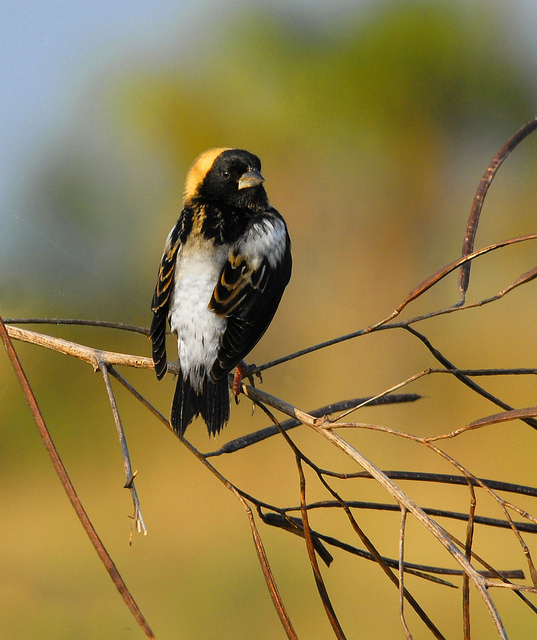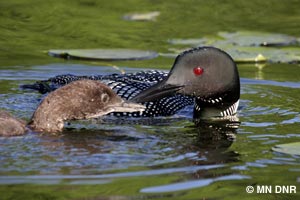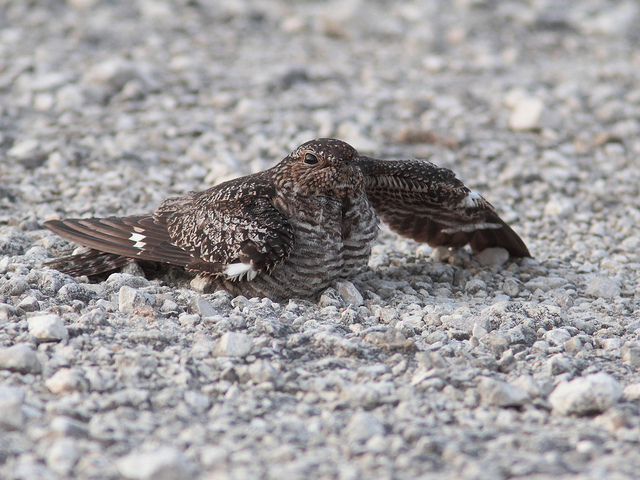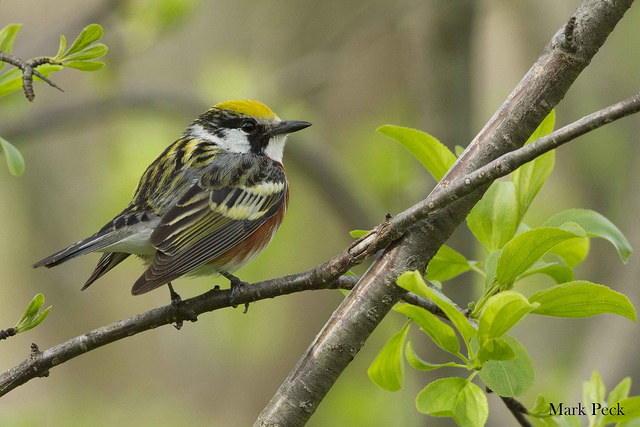Editor’s note: Echo’s Winged Wednesday series reports on expert birders’ favorite Great Lakes birds to watch. Tell us your favorites in the comments.
Some Great Lakes bird calls may bring back memories of summers camping along Lake Michigan or walks through the wetlands of state parks.
For Steve Roels, some bird calls are reminiscent of science fiction.

R2D2, is that you? Photo: Andrea Westmoreland
Roels, a second year doctoral student at Michigan State University, is studying tropical birds in Panama this summer. But he also enjoys scouting birds at home in East Lansing, Mich. Here are some of his favorites:
Roels has a bird for Star Wars fans: the Bobolink.
“[It’s] a striking black and white bird found in dense pastures and agricultural fields,” Roels said. “Bobolinks hold most of their entertainment value in their burbling, effervescent song, which I liken to a very excited R2D2 from Star Wars.”

The Common Loon, the state bird of Minn. and a Great Lakes species with a relatively low sensitivity to mercury.
Another favorite is the common loon, a black and white bird with a beautiful striped pattern on its neck. Loons spend their summers breeding in almost all of Canada and parts of the Great Lakes.
“Loons are visually impressive as well as expert divers, but they make my list because of their hauntingly beautiful call, which mentally puts me on a canoe, paddling some isolated lake in northern Michigan whenever I even hear a recording,” Roels said.
Another favorite water-loving bird Roels’ enjoys seeing along the Great Lakes coasts is the Caspian tern. They are also commonly spotted on ocean coasts.
“Caspian terns can be seen by birders taking a lazy beach day,” Roels said. “Their large, red bill is a big help separating them from other tern species, which are similar to one another and can be a identification headache for birders.”
For birders who want a little bit more of a challenge, yellow-billed cuckoos have a tend to stay well-hidden in forests. The yellow-billed cuckoo bird call is a great way to find where they nest.
“The two cuckoo species in our region are some of the latest migrants to arrive from their tropical winter homes,” Roels said. “Hearing the distinctive call of the yellow-billed cuckoo is my sign that the spring migration season is winding down and summer is settling in.”

Camouflaged common nighthawks are very difficult to find during the day. Photo: Kenneth Cole Schneider
Night owl birders might be able to find common nighthawks in open spaces. Though very difficult to see during the day, these owl-like birds fly in loops at night when hunting for prey.
“The common nighthawk is an interesting nocturnal species that is much easier to observe than any of our owls,” Roels said. “They will even nest on gravel rooftops of buildings in our downtown areas and, once you know to look for them, you can regularly hear and see them gulping down insects above busy streets full of human nightlife.”

These little chestnut-sided warblers typically have two songs that they sing: one to attract a mate and another for defending their territory. Photo: Mark Peck
Roels recommends searching for the chestnut-sided warbler, a small bird with a little yellow “cap” on its head and that can be found throughout the Great Lakes region in the summer.
The bird has “a paint-by-numbers look to them, with solid blocks of color forming a striking pattern,” Roels said. “For some reason, their bright plumage always reminds me of a piece of multi-colored salt water taffy.”
Next week: Ontario birder Mark Cranford describes his favorite coastal birds.